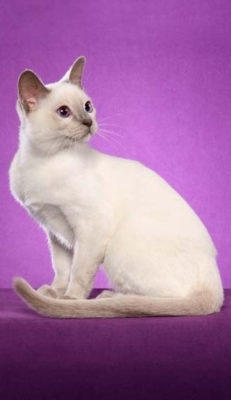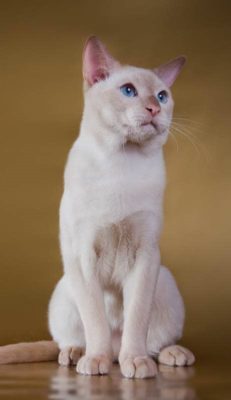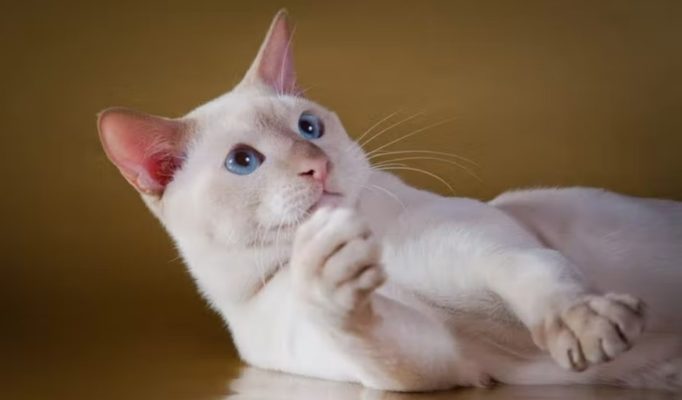Tonkinese
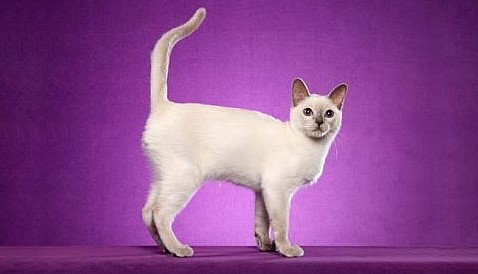
Companion cats and healers – that’s how the owners of this breed respond. They are extremely sociable and friendly. From the Siamese breed, they have inherited not only appearance but also curiosity and intelligence. They inherited their temperament from the Burmese breed; Tonkinese is cheerful, loud, and very pranksters. Tonkinese love to explore and sniff out everything; for them, everything around is a game. They like to climb trees and catch mice; they can even watch the house.
Table of Contents
Breed Information
| Origin | Canada, United States |
| Size | Males 28-30 cm Females 25-28 cm |
| Weight | Males 4.5-5.5 kg Females 3.5-4.5 kg |
| Fur Type | Short-haired |
| Color | Monochrome, mink, and colorpoint patterns in combination with blue, brown, and other shades |
| Lifestyle | Outdoors, indoors |
| Lifespan | 12-15 years |
| FIFe Classification | – |
| WCF Classification | Group 4: “Siamese Oriental Shorthair” Breed designation – TON |
| TICA Classification | TO |
| Group | Short-haired cats |
| Price | $600-1000 |
Breed Photos
Origin History
Not much is known about the origins of the cats called Tonkinese. According to the basic version, this breed is the result of crossing Burmese and Siamese cats. Breeders set out to get the color from Siamese and the body type from Burmese. In the 60s of the twentieth century, thanks to scientists’ efforts in the U.S., a new breed appeared, which was given the name Tonkinese. But historians claim that the first cat was found in the area of Tankin in Indochina. In 1930 it was delivered by ship to San Francisco. This cat was the progenitor of the Tonkinese cat breed and the Burmese cat breed. International recognition of the Tonkinese cat breed was achieved in 1975.
Appearance
If you like looking at plush fur, get a Tonkinese cat. Their fur is short and soft; it changes its color depending on the temperature. The place of residence determines whether the coat will be lighter or darker. Low temperatures control the enzymes that determine the darker color of the fur. If the climate is cold, the shade will be darker.
Color can be platinum, champagne, blue, and naturally gentle white, similar to a small kitten’s fur. The color of the coat can be as solid, or markings such as “mink. The eyes complement the coat; they are the color of the sea wave.
Tonkinese is lean, muscular, of medium size, but heavier than they appear. Their weight ranges from two and a half to nine kilograms. The legs are small, oval, and the hind limbs are slightly longer than the front limbs.
Character
Companion cats and healers – that’s how the owners of this breed respond. They are extremely sociable and friendly. From the Siamese breed, they have inherited not only appearance but also curiosity and intelligence. They inherited their temperament from the Burmese breed; Tonkinese is cheerful, loud, and very pranksters. Tonkinese love to explore and sniff out everything; for them, everything around is a game. They like to climb trees and catch mice; they can even watch the house.
Tonkinese is ascribed electro-sensory abilities; these animals can even help to establish harmonious family relationships. They empathize with their owners and will never betray them. Abroad, Tonkineses help treat children with cerebral palsy, autism, and nervous disorders.
Care
The Tonkinese cat prefers to live in a home, but they need to be provided with a comfortable living environment. Tonkinese is suitable for a family that needs a playful and active cat. Tonkinese cats are especially talkative; they like to chat and socialize with the owners and other animals.
Tonkinese, especially at a young age, is very agile and playful, playing with everything in their path. If you do not want your apartment to look like a battlefield, we advise you to put away crystal vases, china, and other objects that are so dear to the heart.
Tonkinese does not shed much; it is enough to comb them once a week with a special brush. If a person strokes a Tonkinese cat, he or she gets a burst of energy and vitality.
Education
The Tonkinese love their owner wholeheartedly; they will go to the fire and into the water for him without a second thought. With such canine loyalty, these cats also have a dog’s intelligence. They are easy to train and understand everything they are told. Fetch is their favorite command; Tonkinese will happily chase a ball and bring it back. Tonkinese cats love to run and jump. Many owners notice their pets’ incredible leaping ability and well-developed hunting instinct. These preferences should be taken into account during training and turn training into a fun game.
Common Diseases
The largest litter of this breed had 19 kittens when regular cats produced only five. They are also famous for their longevity and excellent health, so they live up to almost 20 years. In addition to beauty, Siamese and Burmese cats inherited hereditary diseases – asthma, heart disease, strabismus, upper respiratory problems, gingivitis, liver amyloidosis. This pet needs routine check-ups at the veterinarian. They should also receive periodic prophylaxis against parasites.
Nutrition
The taste preferences of Tonkinese can vary widely. It is not recommended to offer your pet pork and fresh fish or any leftovers from the table. Tonkinese can have major stomach problems due to improper nutrition. Tonkinese should eat a balanced diet, avoiding fatty and salty foods. It is recommended that kittens be fed five times a day and adults only twice a day. If Tonkinese begins to gain weight, you need to reduce portions and reconsider their diet.
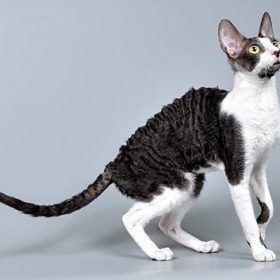 Oregon Rex
Oregon Rex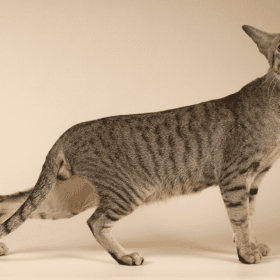 Oriental Shorthair
Oriental Shorthair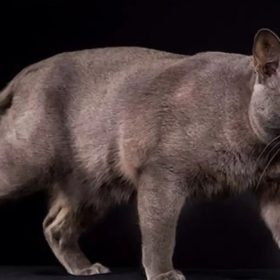 Korat
Korat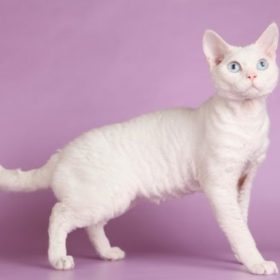 German Rex
German Rex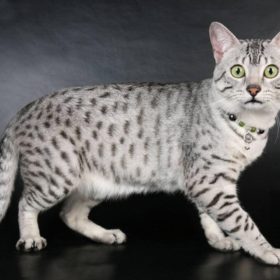 Arabian Mau
Arabian Mau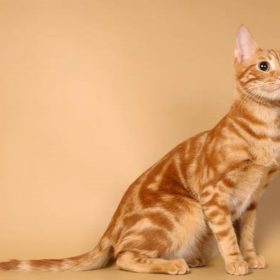 Anatolian Cat
Anatolian Cat